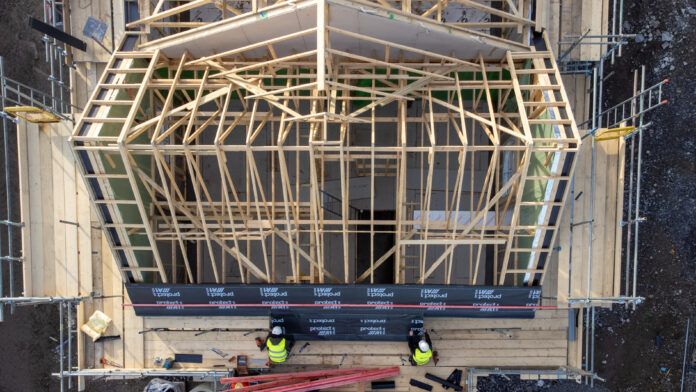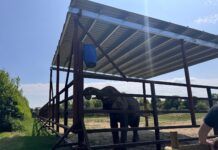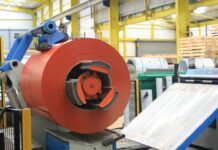With the industry responding to the latest guidance from the NHBC, John Mellor, senior product manager from building products manufacturer Glidevale Protect, provides an overview of the NHBC Standards 2024 in terms of ventilation guidance when integrated, in-roof solar PV panels are being installed and offers solutions for compliance.
The NHBC has updated its Technical Standards for 2024. This is an important document to take note of as it defines the technical requirements and performance standards for the design and construction of all new homes where the foundations are started on or after 1st January 2024.
What’s changed?
Essentially, one key update in the new NHBC Standards 2024 is to address the installation of integrated, in-roof solar panels, covering guidance on a compatible roofing underlay and ventilation strategy in accordance with BS 5250, to help prevent trapped moisture forming on the underside of the solar panel and reducing the risk of rotting timbers.
The new NHBC Standards contain revisions to clause 7.2.15 ‘Ventilation, vapour control and insulation’ which stipulates that where arrays of integrated in-roof solar roof panels are used, the whole roof covering should be treated as air impermeable unless the panel manufacturer is able to demonstrate its system is air permeable. As a result, roofs with integrated PV panels will now be classed as air impermeable as standard, even if the roof tiles themselves are air permeable. So, a small number of PV panels would render the whole roof impermeable and should be treated as such, unless it can be proven otherwise. And as an air impermeable roof covering, there is a greater risk of interstitial condensation on the underside of the underlay and the external covering if the correct ventilation strategy is not used.
The Standards subsequently reference ventilation guidance for impermeable roof coverings on both cold and warm roofs, and the need to adhere to BS 5250: 2021 – Management of moisture in Buildings – Code of practice to help prevent the risk of condensation build up in the roof space.
Can you use vapour permeable roofing underlays with in-roof solar without additional ventilation?
The simple answer is no, as the roof is classed as impermeable it will need further ventilation provision. When vapour permeable, low resistance (LR) roofing underlays, including air and vapour permeable membranes are used on a warm or cold roof in conjunction with integrated, in-roof solar PV panels, Glidevale Protect’s recommended best practice is to install counter battens. Using 25mm deep counter battens with a minimum free ventilation area of not less than 25,000mm²/m at eaves or low level and 5,000mm²/m continuous air gap each side of the ridge or at high level is advised. On a cold roof, ventilation is also required under the membrane at 7,000mm²/m at eaves level with a normal ceiling or 3,000mm²/m at eaves with a well sealed ceiling.
Alternatively, it is also accepted to ventilate with 5,000 mm²/m at ridge instead of 3,000 mm²/m at eaves if there is a well sealed ceiling. Without the use of counter battens with an LR underlay, the risk of interstitial condensation forming on the underside of the solar panels increases, as the water vapour will pass through the membrane but cannot escape into the atmosphere. One alternative option when using an LR underlay on a cold roof however, as detailed in BS 5250 is not to counter batten but ventilate underneath the underlay as if it was a HR underlay, thereby requiring eaves level ventilation and additional ridge ventilation, the latter only required subject to the roof’s pitch, span and if classified as a mono pitch.
What about vapour impermeable roofing underlays?
Vapour impermeable, high resistance (HR) underlays suitable for use with integrated in-roof solar PV panels can offer the added advantage of eliminating the need for a ventilated counter batten space as these products are designed to prevent water vapour from transferring through the underlay and reaching the exterior layers above the membrane. This has a positive knock-on effect of reducing material costs and time on site.
Ventilation would still be required underneath the underlay on both cold and warm roofs, with cold roofs requiring 10,000mm²/m at eaves level and 5,000mm²/m at ridge, the ridge ventilation only required when the roof pitch is over 35 degrees, a span over 10m or a mono pitch. Warm roofs require additional airflow with 25,000mm²/m required at eaves or low level and 5,000mm²/m at ridge or high level.
With so much choice, how can compliance be assured?
Here it’s all about your supply chain partners and the roofing products suppliers that you deal with. Yes, you need choice, but contractors also need clear guidance on exactly what is the best solution for their project.




